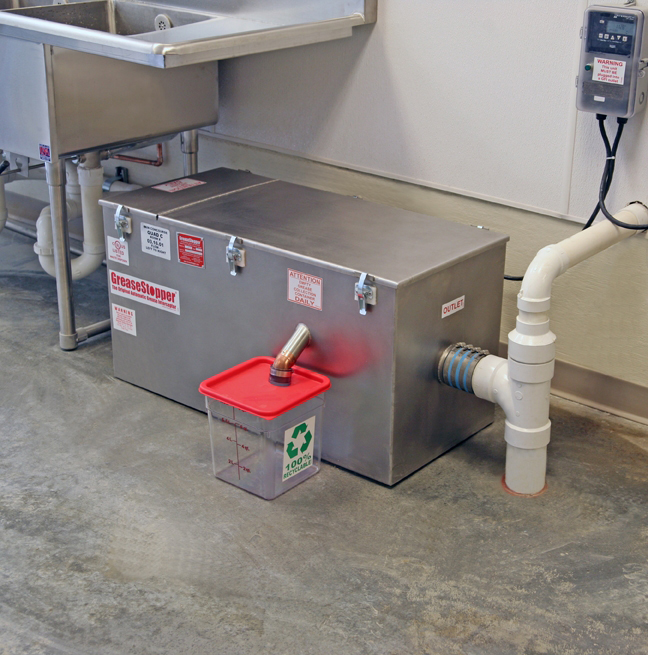Grease traps are used in commercial restaurants to remove solids as well as fats, oil, and grease (collectively known as FOGs), from wastewater before it is discharged into municipal wastewater systems. This week, we’ll talk about how grease traps work, and how to diagnose some common grease trap problems.
How Grease Traps Work
The grease trap is located after the drain but before the municipal sewer system. The water enters the trap through a flow regulator/diverter, which prevents water from flooding the trap and mixing up the debris and FOGs that the trap is working to separate.
Once the water enters the trap, it begins to cool. This allows the FOGs in the water to harden, and float to the surface, as they are less dense than water. Debris on the other hand sinks to the bottom of the trap. This leaves a middle layer of clean water that is safe to discharge into the sewer system.
This water then enters the second compartment in the trap which is separated from the first by a crossover pipe. Here any grease that made it through is allowed to rise to the surface. The cleaned water is discharged through an outlet pipe. The FOGs and debris are removed when they reach certain levels to prevent overflow.
Common Grease Trap Problems
There are a number of problems that can prevent grease traps from operating effectively.
Clog in Crossover
This occurs when FOGs and/or debris build up in the crossover line between the two compartments. If the crossover pipe is clogged, the liquid level in the first compartment will be too high while the level in the second compartment will be normal. The water may even be overflowing in the first compartment.
Clog in Incoming Line
A clog in the incoming line will quickly cause the lowest plumbing fixture in the restaurant to back up. Look for backed-up floor drains. A backed-up sink suggests that the branch line to that fixture is clogged as opposed to the grease trap incoming line.
Clog in Outgoing Line
If there is a clog in the outgoing line, the grease trap will overflow from both compartments. The clog may be in the line itself or in the city main. If you haven’t been pumping waste on cycle, the clog in the main may be your fault. Make sure to always dispose of wastewater on cycle.
Full Grease Trap
A full grease trap results when grease has not been removed from the primary compartment in a timely fashion, causing it to spill over into the secondary compartment, and clogging crossover, incoming, and outgoing lines. To see if the trap is full, open the lid and use a pole to gauge the depth of the grease cap. If it reaches the bottom, then the trap is full. However, if you’re experiencing a grease trap problem, it’s usually not the case that the grease trap is full.
Grease Traps from Tanks Direct
Tanks Direct services and installs the following grease traps and related products:
- Grease Removal Devices
- Grease Interceptors
- Gravity Grease Interceptors
- Strainer Baskets
- Solids Removal Systems
- Underground concrete, fiberglass, or steel tanks for high-flow applications
- Automatic Grease Removal Units (AGRUs)
- Grease Recovery Devices (GRDs)
To learn more, please contact us today.
